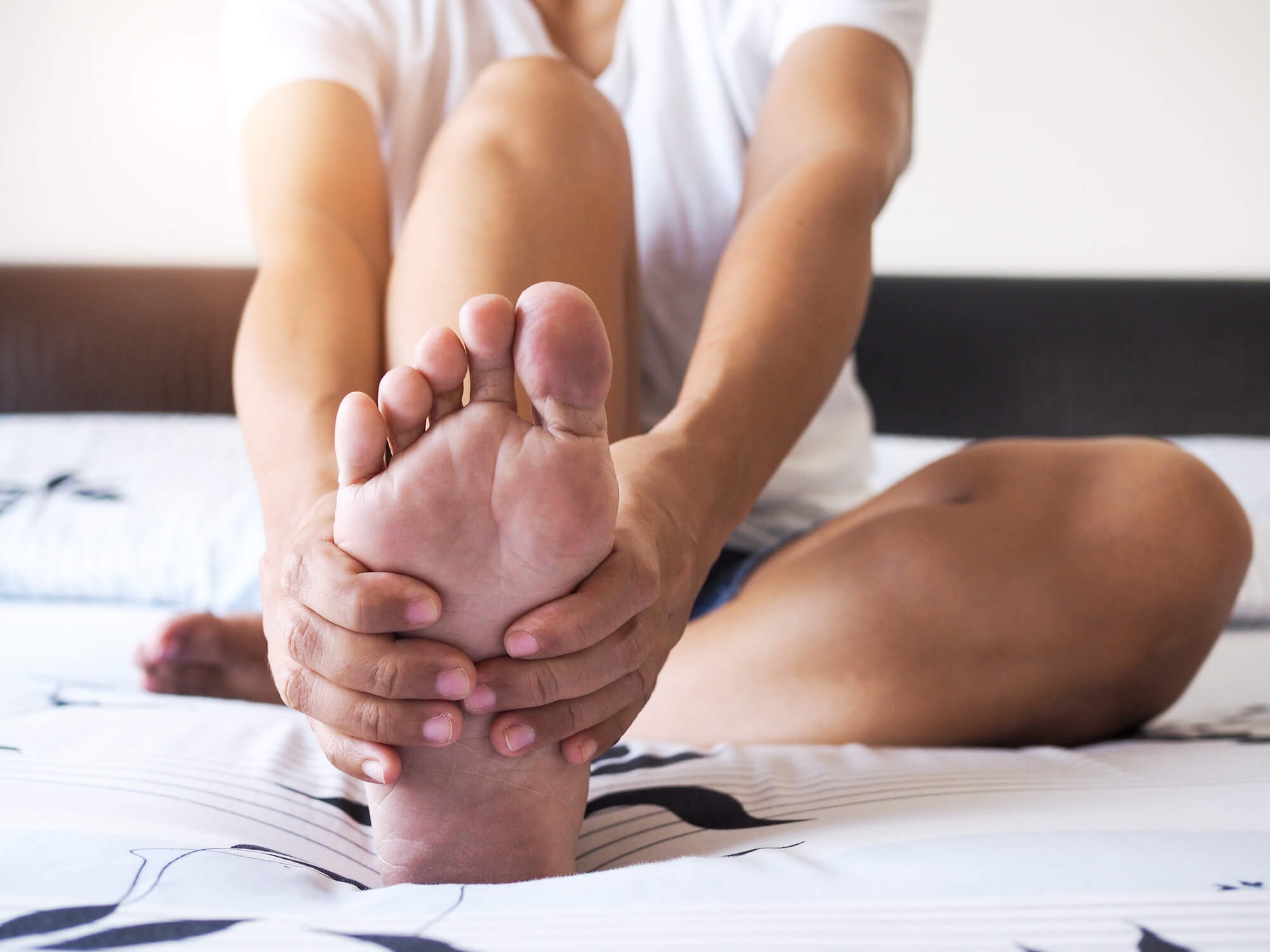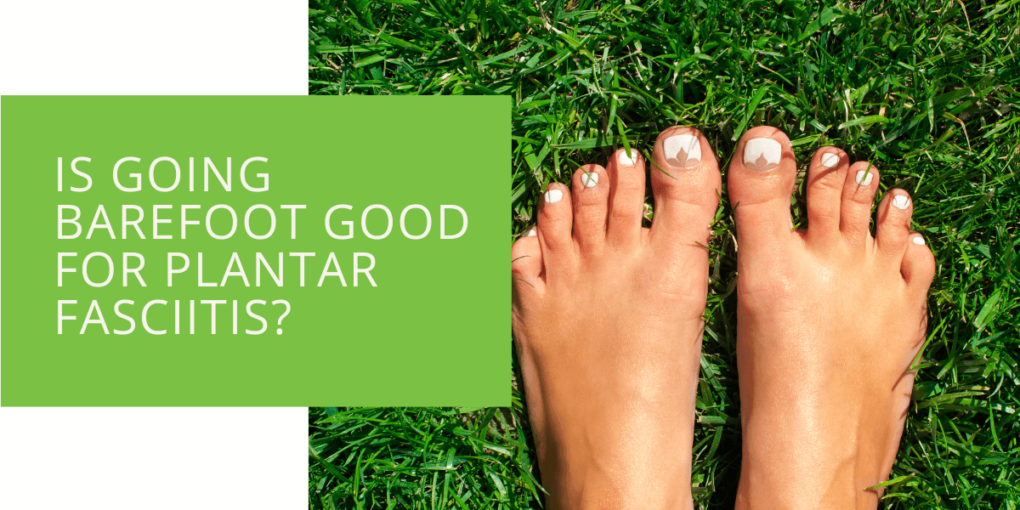Is Going Barefoot Good for Plantar Fasciitis?
Plantar fasciitis is a common foot condition that causes pain and inflammation in the bottom of the foot, specifically in the plantar fascia, a thick band of tissue that runs from the heel to the toes. It is often characterized by pain that is worst in the morning or after periods of inactivity and can be accompanied by swelling, stiffness, and difficulty walking.
Plantar fasciitis has many potential causes, including overuse or strain on the foot, being overweight, having high arches or flat feet, wearing shoes with poor support, and having tight calf muscles. It is most commonly seen in physically active people, especially runners, who spend long periods of time standing on their feet.
In recent years, people have been going barefoot or wearing minimal footwear, such as barefoot shoes or toe shoes. This has led to the question of whether going barefoot or wearing minimal footwear might be helpful for those suffering from plantar fasciitis. In this article, we will explore the benefits and risks of going barefoot for plantar fasciitis and provide some guidance for those considering it as a treatment option.
The Benefits of Going Barefoot
There are several potential benefits to going barefoot or wearing minimal footwear for those with plantar fasciitis. One of the main arguments in favor of going barefoot is that it can help to improve foot function and strength.
Our feet are often confined in a rigid, unnatural position when we wear shoes, leading to muscle weakness and imbalances. Going barefoot allows the foot to move more naturally and can help to strengthen the muscles in the foot and lower leg. This can be especially important for those with plantar fasciitis, as weak foot and lower leg muscles can contribute to the development of the condition.
Some evidence suggests that going barefoot or wearing minimal footwear may be specifically beneficial for those with plantar fasciitis. One study found that people who wore minimal footwear had less pain and improved function compared to traditional shoes. Another study found that a combination of barefoot walking and custom orthotics effectively reduced pain and improved function in people with plantar fasciitis.

The Risks of Going Barefoot
While going barefoot may have some potential benefits for those with plantar fasciitis, it is also important to consider the potential risks. One of the main concerns with going barefoot is the risk of injury from sharp or rough objects on the ground, such as broken glass or rough pavement. It is also important to be careful of hot surfaces, such as sand or asphalt, on a sunny day, as they can burn the soles of the feet.
In addition to these environmental risks, it is important to be mindful that going barefoot or wearing minimal footwear can put more strain on the feet and lower legs. It is important to gradually introduce barefoot activities and listen to your body to avoid overuse injuries. It may be helpful to start with short walks or other low-impact activities and gradually increase the duration and intensity as your feet, and lower legs become stronger.

Other Factors to Consider
It is important to remember that going barefoot or wearing minimal footwear is just one aspect of treating plantar fasciitis. It is important to take a holistic approach to treatment, which may include stretching and exercises for the feet and lower legs, as well as using proper footwear and possibly seeking the guidance of a podiatrist.
In terms of footwear, choosing shoes that provide good arch support and cushioning for the heels is important. It may also be helpful to use inserts or orthotics, which can help to distribute weight evenly across the foot and provide extra cushioning and support. A podiatrist can assess your needs and recommend the best type of footwear and inserts.
It is also important to remember that everyone is different, and what works for one person may not work for another. It is always a good idea to consult with a healthcare professional, such as a podiatrist, before making any changes to your treatment plan. Podiatrists are trained professionals who specialize in treating foot and ankle conditions and can provide individualized guidance and recommendations based on your specific needs and circumstances.
Conclusion
In conclusion, going barefoot or wearing minimal footwear may benefit those with plantar fasciitis, particularly by improving foot function and strength. However, it is important to consider the potential risks and be mindful that going barefoot or wearing minimal footwear can put more strain on the feet and lower legs. It is important to gradually introduce barefoot activities and listen to your body to avoid overuse injuries.
It is also important to remember that going barefoot or wearing minimal footwear is just one aspect of treating plantar fasciitis. It is important to take a holistic approach to treatment, which may include stretching and exercises for the feet and lower legs, as well as using proper footwear and possibly seeking the guidance of a podiatrist. It is always a good idea to consult with a healthcare professional, such as a podiatrist, before making any changes to your treatment plan.
FAQ
Can going barefoot or wearing minimal footwear help relieve pain caused by plantar fasciitis?
There is some evidence to suggest that going barefoot or wearing minimal footwear may be helpful for those with plantar fasciitis. One study found that people who wore minimal footwear had less pain and improved function compared to traditional shoes. Another study found that a combination of barefoot walking and custom orthotics effectively reduced pain and improved function in people with plantar fasciitis. However, it is important to remember that everyone is different and what works for one person may not work for another. It is always a good idea to consult with a healthcare professional, such as a podiatrist, before making any changes to your treatment plan.
Are there any risks to going barefoot or wearing minimal footwear for plantar fasciitis?
There are some potential risks to consider when going barefoot or wearing minimal footwear for plantar fasciitis. One of the main concerns is the risk of injury from sharp or rough objects on the ground, such as broken glass or rough pavement. It is also important to be careful of hot surfaces, such as sand or asphalt, on a sunny day, as they can burn the soles of the feet. In addition to these environmental risks, it is important to be mindful that going barefoot or wearing minimal footwear can put more strain on the feet and lower legs. It is important to gradually introduce barefoot activities and listen to your body to avoid overuse injuries.
What other factors should be considered when deciding whether to go barefoot or wear minimal footwear for plantar fasciitis?
It is important to take a holistic approach to treat plantar fasciitis, which may include stretching and exercises for the feet and lower legs, as well as using proper footwear and possibly seeking the guidance of a podiatrist. It is important to choose shoes that provide good arch support and cushioning for the heels, as well as inserts or orthotics that can help to distribute weight evenly across the foot and provide extra cushioning and support. It is also important to remember that everyone is different, and what works for one person may not work for another. It is always a good idea to consult with a healthcare professional, such as a podiatrist, before making any changes to your treatment plan.
Can going barefoot or wearing minimal footwear improve the arch of the foot and help with posture?
Some evidence suggests that going barefoot or wearing minimal footwear may help improve the function of the foot and lower leg muscles, which can, in turn, improve the arch of the foot and potentially help with posture. However, it is important to remember that going barefoot or wearing minimal footwear is just one aspect of treating plantar fasciitis and improving foot function and posture. It is important to take a holistic approach to treatment, which may include stretching and exercises for the feet and lower legs, as well as using proper footwear and possibly seeking the guidance of a podiatrist.
Can going barefoot or wearing minimal footwear damage the tendon in the foot?
There is a risk that going barefoot or wearing minimal footwear can put more strain on the feet and lower legs, which could potentially lead to tendon damage. It is important to gradually introduce barefoot activities and listen to your body to avoid overuse injuries. It may be helpful to start with short walks or other low-impact activities and gradually increase the duration and intensity as your feet, and lower legs become stronger. Suppose you experience any new or worsening pain or discomfort when wearing barefoot or minimal footwear. In that case, it is important to stop the activity and seek the guidance of a healthcare professional, such as a podiatrist.
It is also important to consider other factors contributing to tendon damage, such as overuse or improper training techniques. If you are physically active, following a proper training program and listening to your body to avoid overuse injuries is important. It may also be helpful to incorporate stretching and strength training exercises into your routine to help improve muscle balance and prevent injuries.
Is it okay to walk barefoot or wear minimal footwear all the time for plantar fasciitis?
It is generally not recommended to walk barefoot or wear minimal footwear all the time for plantar fasciitis. It is important to consider the potential risks and be mindful that going barefoot or wearing minimal footwear can put more strain on the feet and lower legs. It is important to gradually introduce barefoot activities and to listen to your body to avoid overuse injuries.
In addition, it is important to consider the environment and to choose footwear that is appropriate for the task at hand. For example, it may not be safe or practical to walk barefoot on rough or uneven surfaces or in environments where there may be sharp or hazardous objects on the ground. It is also important to consider the weather and to wear appropriate footwear to protect your feet from the elements.
It is generally recommended to use a combination of barefoot or minimal footwear activities and traditional shoes, depending on the activity and the environment. It is always a good idea to consult with a healthcare professional, such as a podiatrist, before making any changes to your treatment plan.

